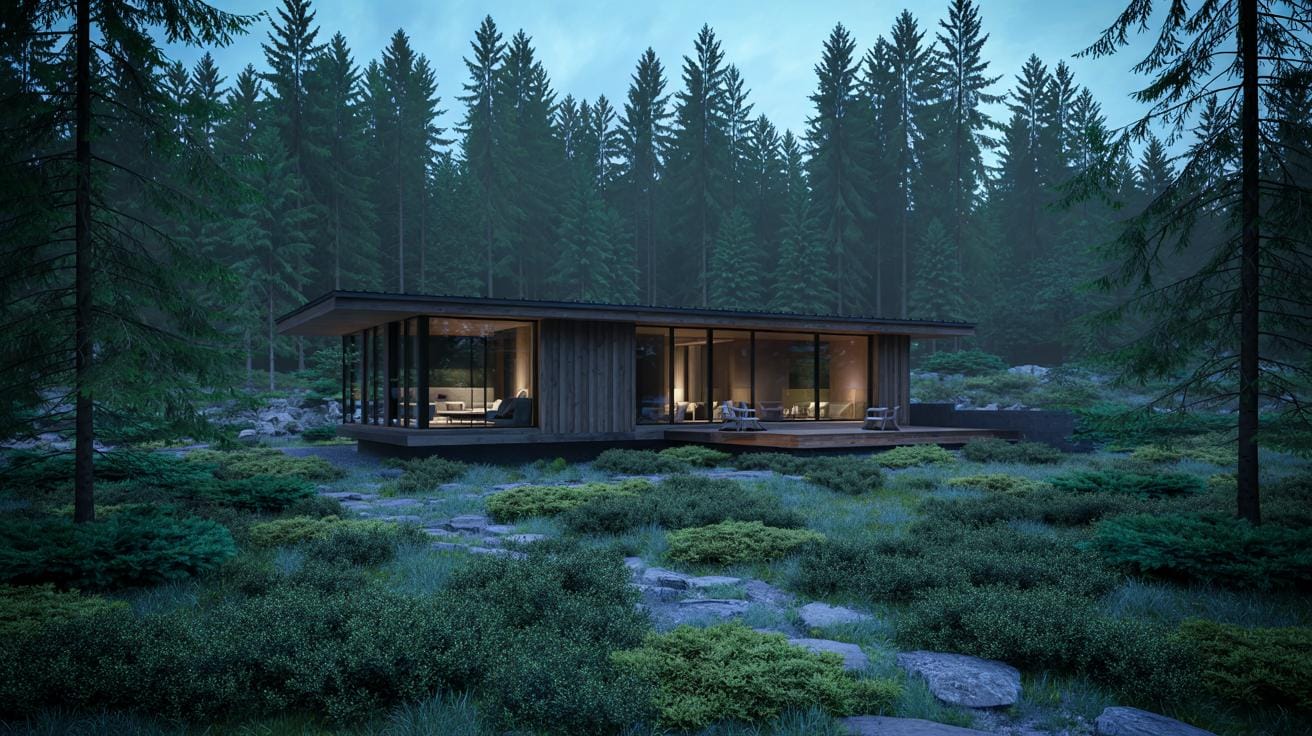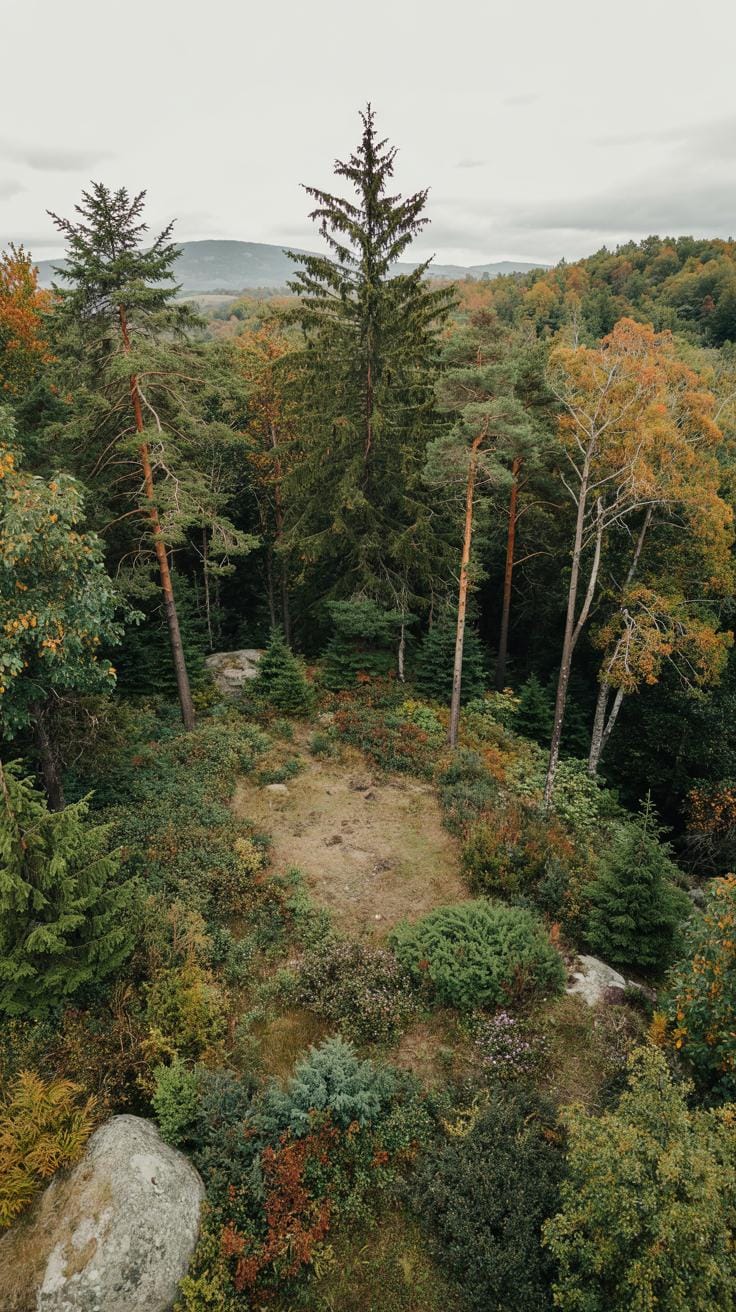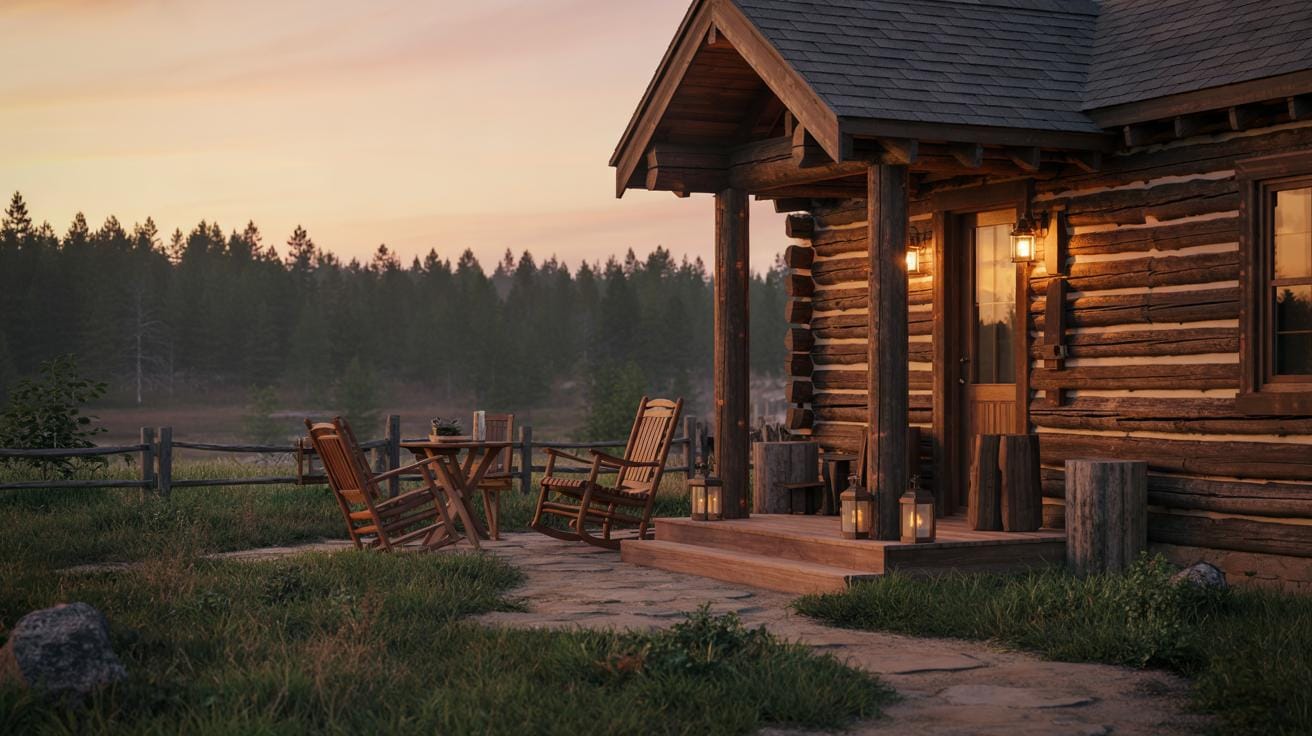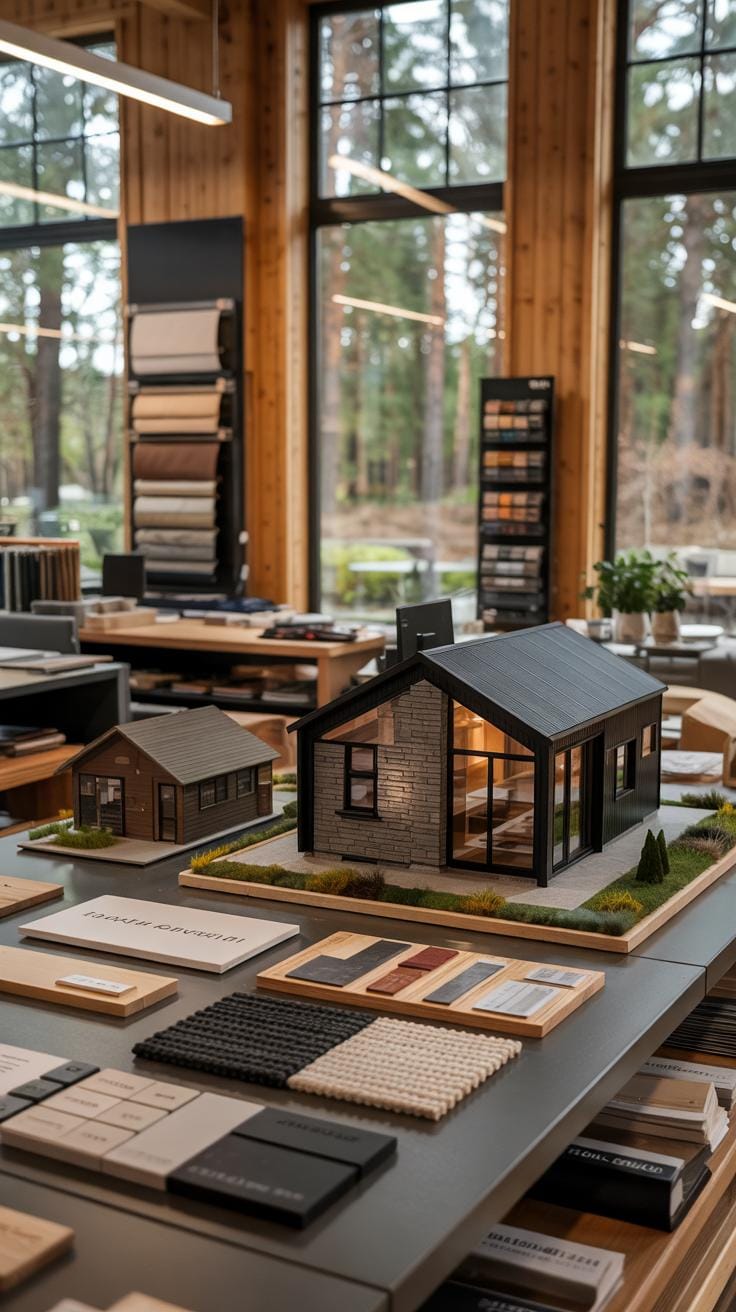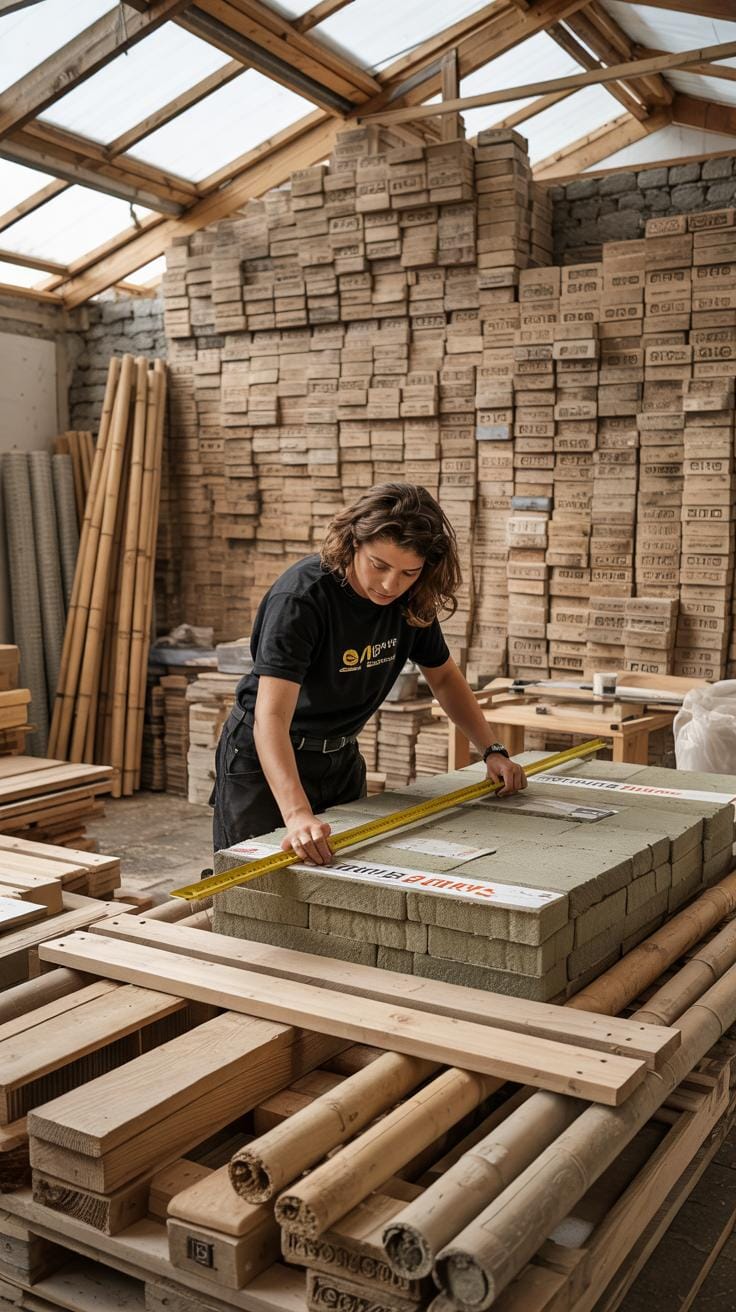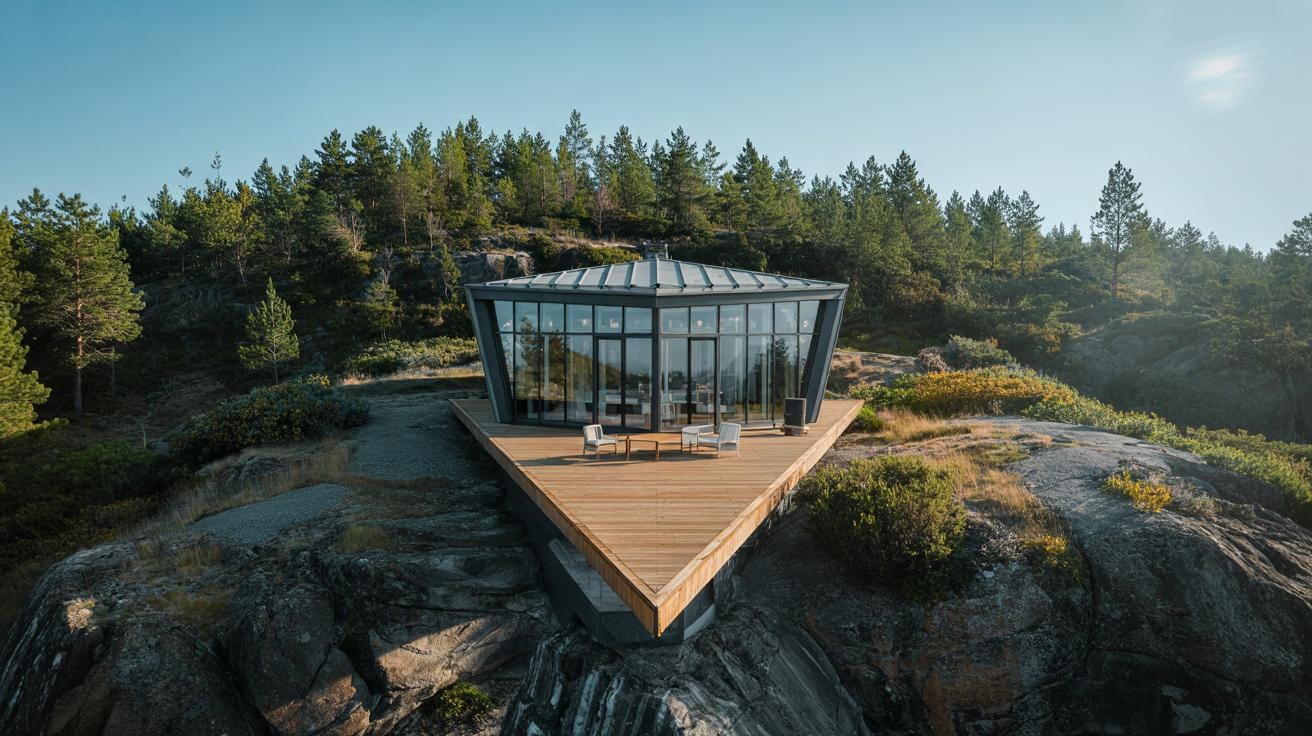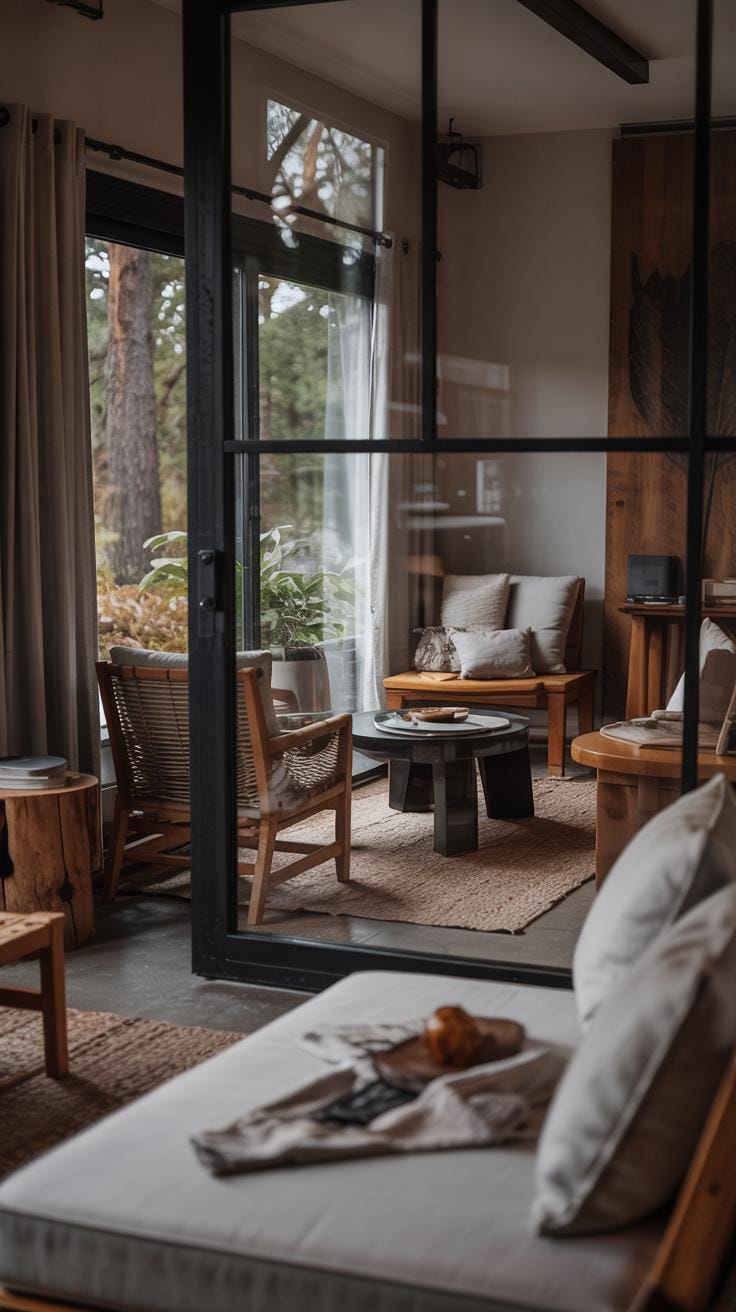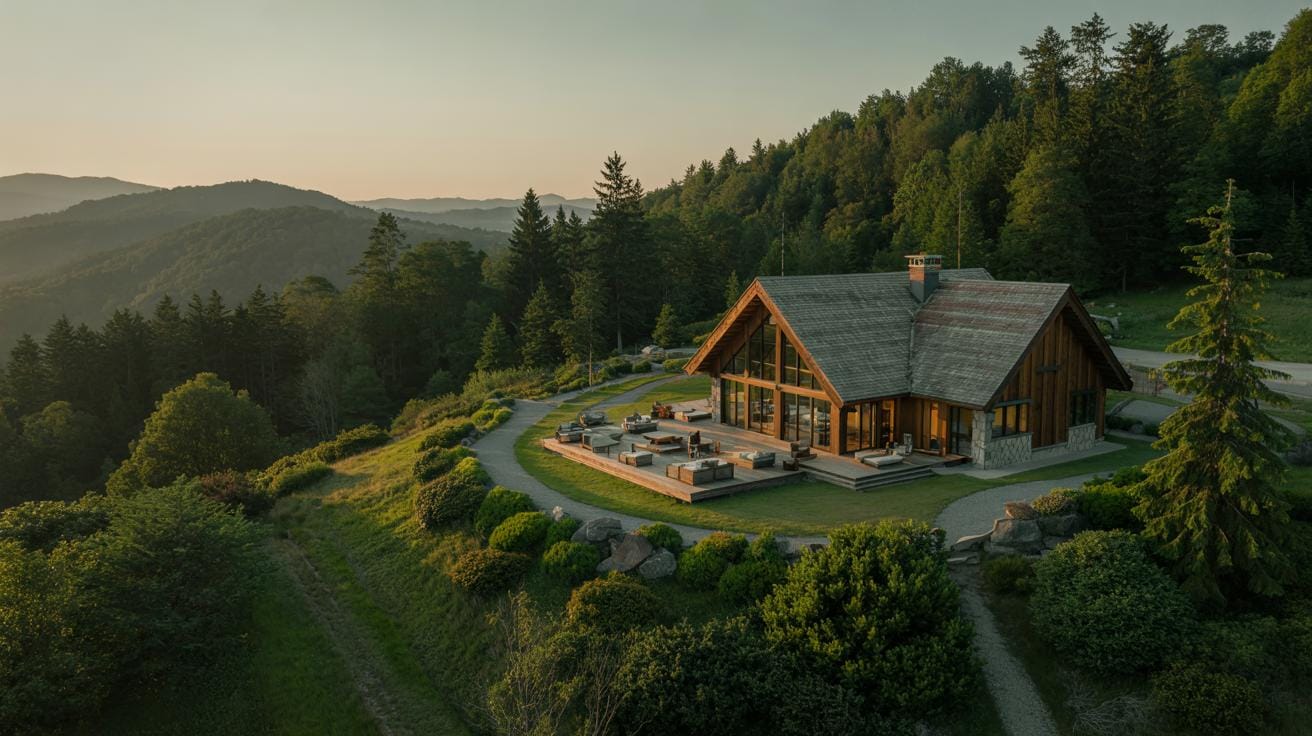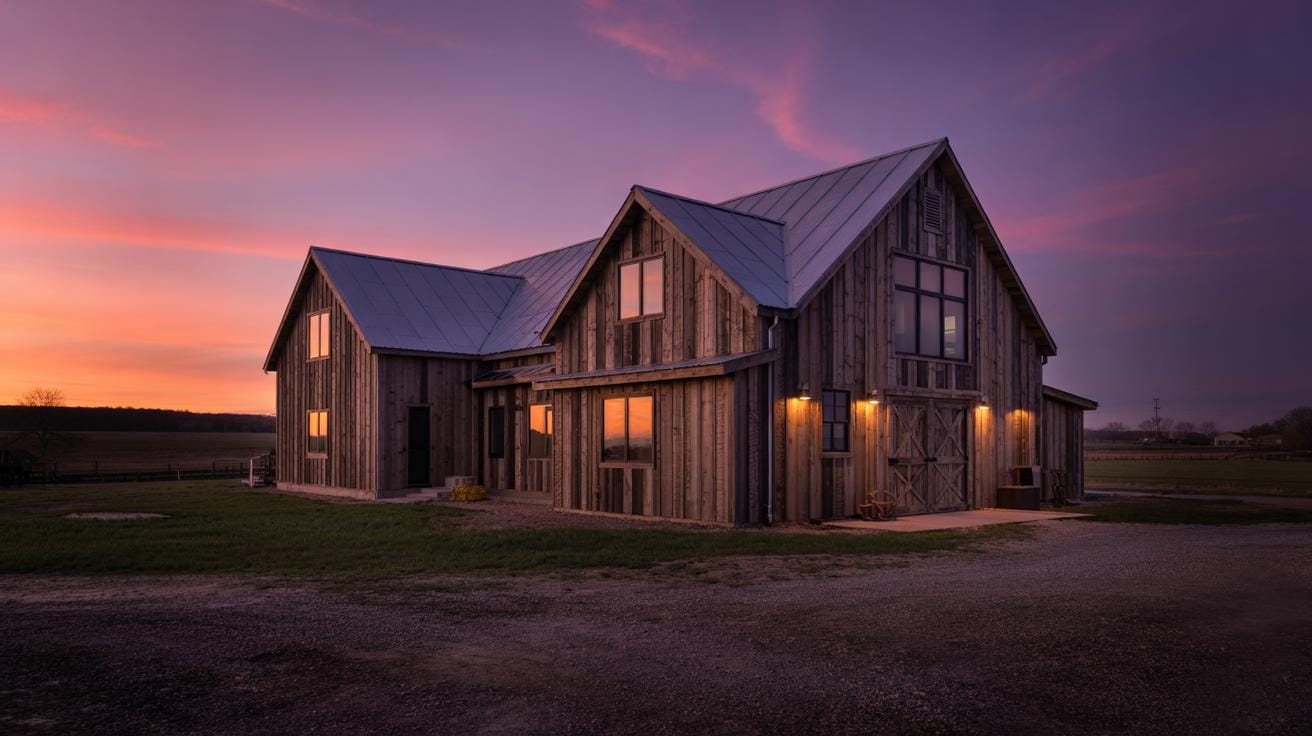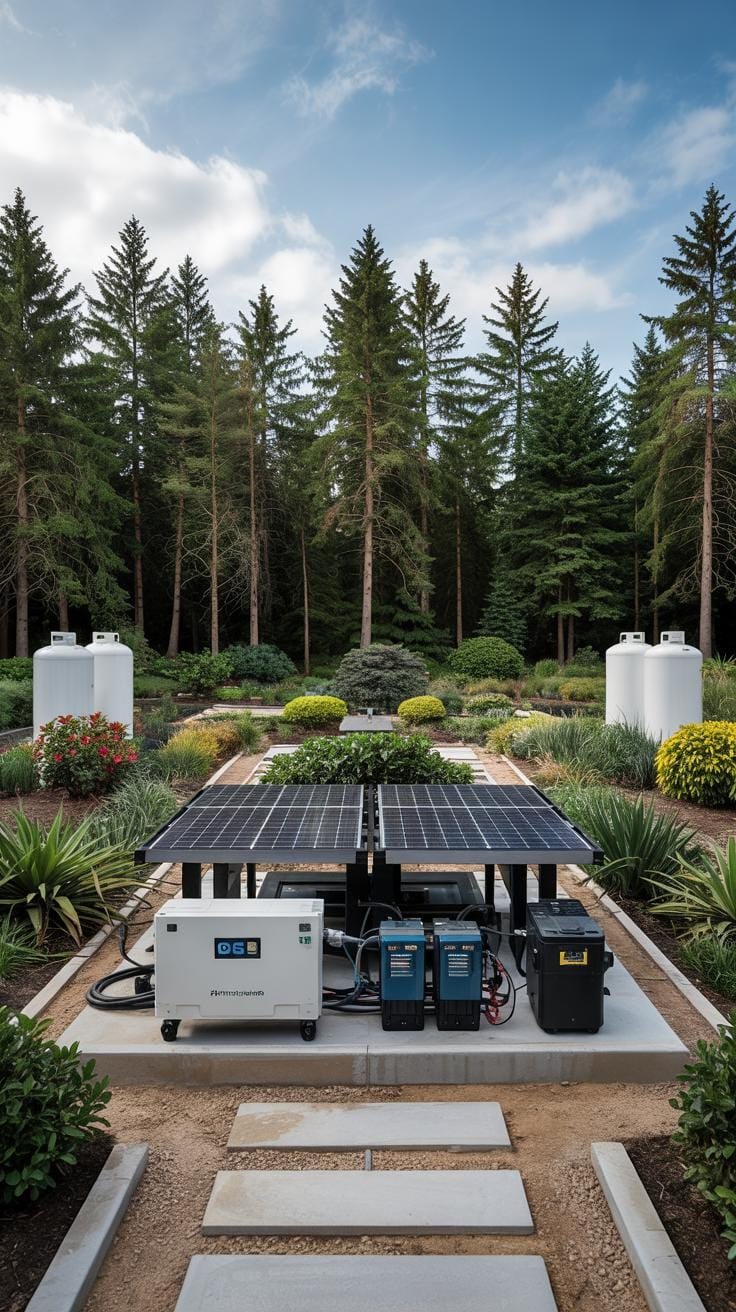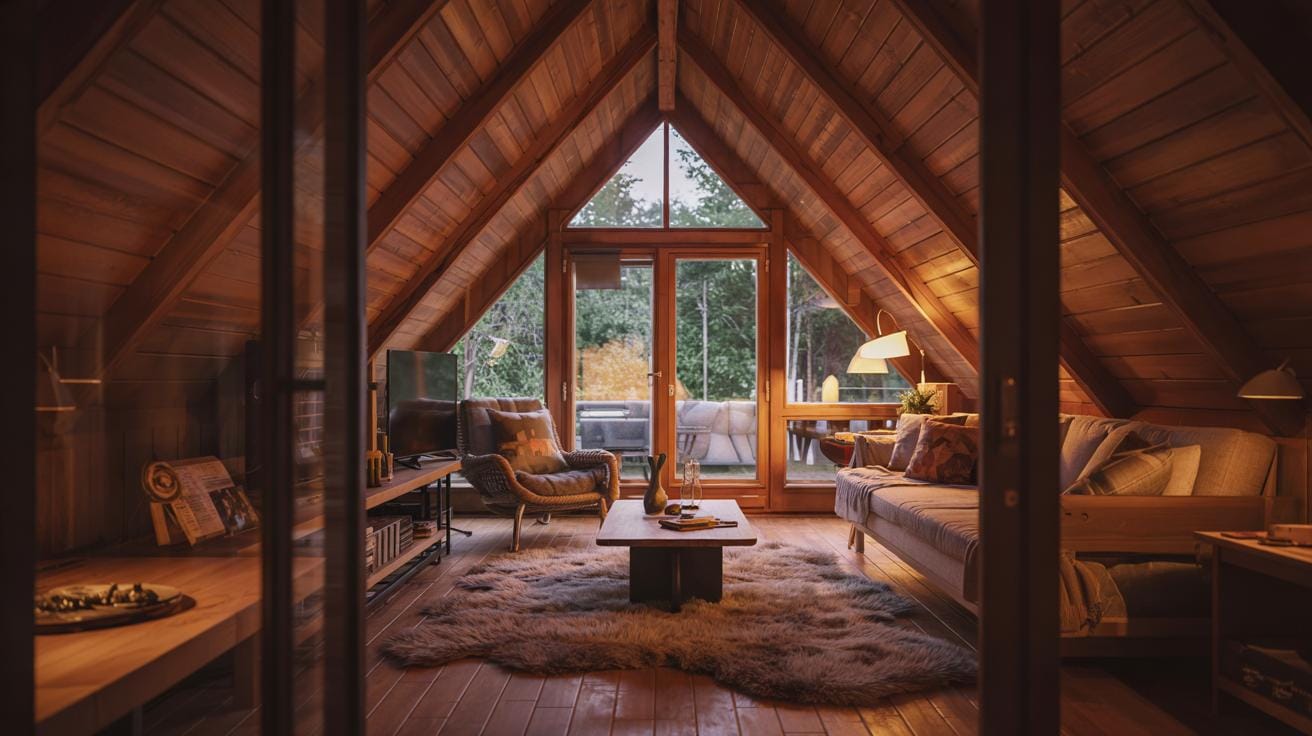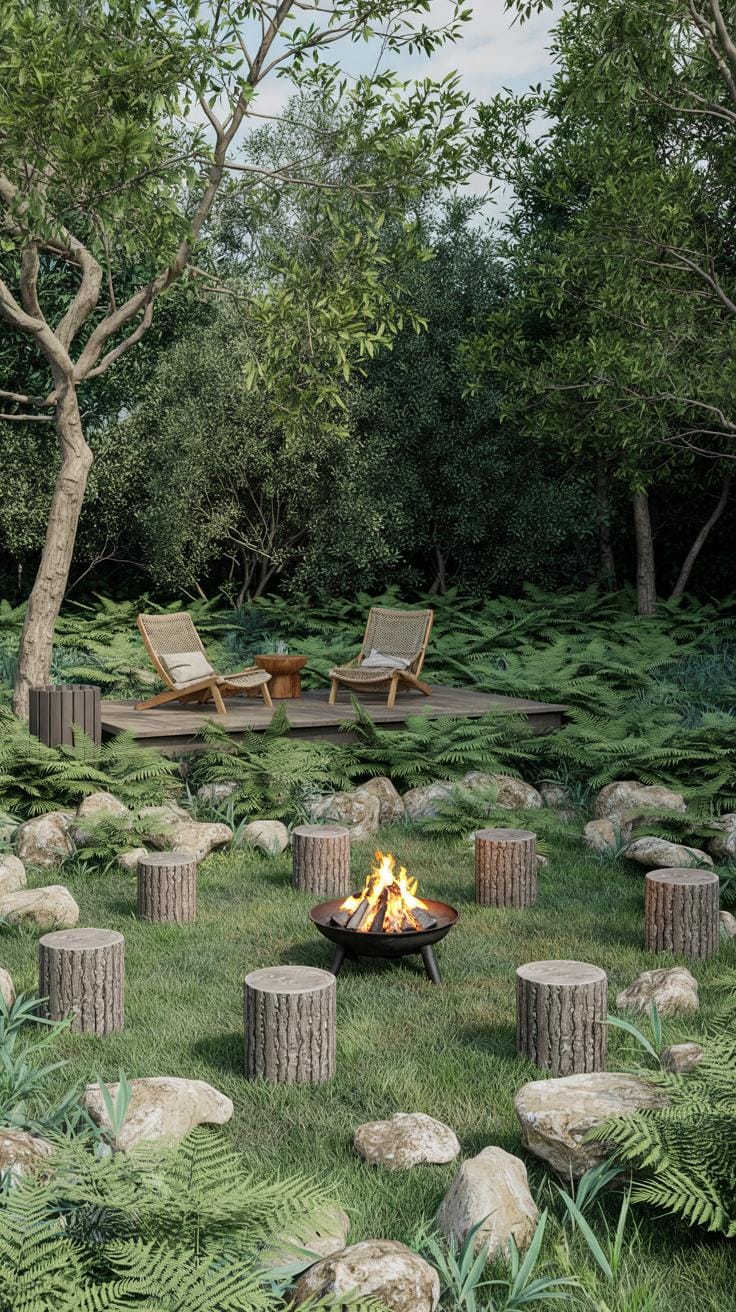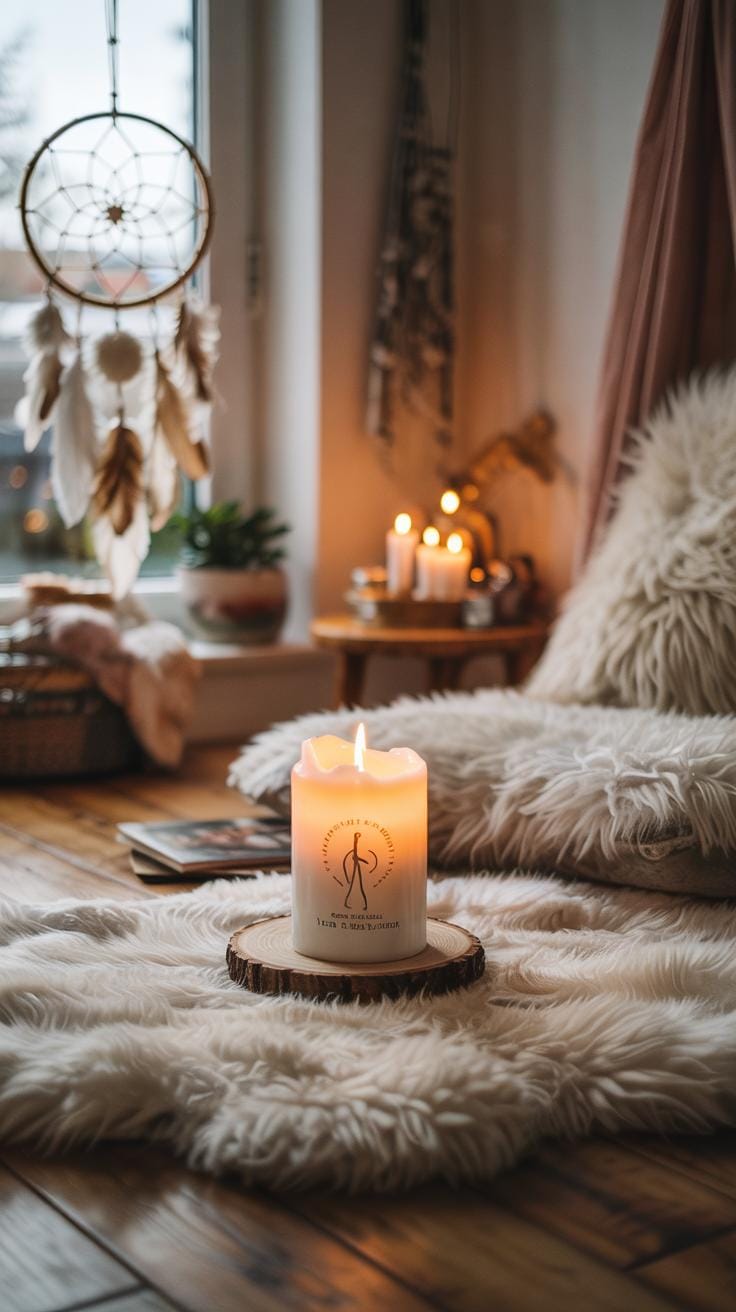Introduction
Forest houses offer a unique opportunity to design a personal retreat surrounded by nature. You gain a peaceful space to relax, reflect, and enjoy the woods. Choosing the right location and design involves understanding your needs, the environment, and practical aspects of living in a forested area. This article guides you through the process of creating your ideal forest house escape step by step.
This guide explores key topics such as site selection, architectural styles, sustainable building techniques, and interior design tailored for forest living. You will also find insights on integrating your house with nature while maintaining comfort. Whether building from scratch or renovating an existing cabin, the tips here aim to help you safely and effectively turn your woodland retreat vision into reality.
Choosing the Perfect Location for Your Forest House
Choosing where to place your forest house shapes your daily life and overall experience in the woods. First, consider how easy it is to reach your site. Can you get there by car or foot without trouble? Roads or trails nearby make it simpler to bring supplies and access emergency services if needed.
Look at sunlight exposure next. A spot with morning sun can warm your house early, while afternoon shade helps keep it cool. Check if trees block light or if you can clear a few without harming the environment. Think about nearby water sources. Streams or springs provide water but might also bring flooding risks. Make sure your site stands above any floodplain.
Privacy comes from natural barriers like dense trees or hills. Would you want neighbors close, or is seclusion key? Safety matters too. Avoid steep slopes or unstable ground to reduce risks from landslides or erosion. Before making plans, verify legal permissions. Local rules may restrict where you can build or require permits. Have you checked with local authorities about these rules?
Evaluating Environmental Factors
Assess the soil type before you build your forest home. Firm, well-drained soil supports strong foundations, while wet or sandy soil may require extra work. Walk around to identify tree species. Some trees have deep roots that stabilize soil, while others might pose risks if unhealthy or too close. Do you spot dead or leaning trees that could fall?
Notice the wildlife in your chosen area. Frequent animal activity may affect daily living. Make sure your site respects their habitats to avoid future conflicts. Microclimates also influence your comfort. A sheltered hollow may stay warmer in cold months, while a windy ridge might cool you down in summer. Understanding these details helps you plan for a stable, sustainable home surrounded by nature’s rhythms.
Legal and Safety Considerations
Before starting construction, research zoning laws that apply to your forest property. Many areas limit building size, height, or placement to protect natural resources. You might need permits for construction, water use, or clearing trees. Contact your local government to confirm what’s required.
Fire risk is serious in woodlands. Choose a site with natural firebreaks like rocks or less flammable vegetation. Plan safe access routes for emergency vehicles. Also, think about wildlife safety. Avoid locations near large animal trails or nesting sites. Keeping your house accessible can save lives during emergencies. Have you mapped out your escape routes and emergency contacts?
Architectural Styles Suitable for Woodland Living
Selecting a style for your forest house means balancing form, function, and fit with the environment. The design should complement the natural surroundings without standing out harshly. It also has to withstand the local climate challenges, like heavy rain, snow, or strong winds.
Rustic cabins offer a simple, time-tested option. They use raw materials like logs, stone, and rough wood. These materials age naturally and help the house blend with the trees. Traditional timber-framed houses bring a classic look, using sturdy wood frameworks and pitched roofs that shed snow and water efficiently.
Modern eco-homes take a different path. They emphasize sustainability and create close connections to nature through big windows and open layouts. Features such as green roofs or solar-heated walls make these houses energy wise. Think about your priorities: do you want cozy charm, timeless structure, or cutting-edge eco-tech in your woodland escape?
Rustic and Traditional Designs
Rustic and traditional forest houses rely on natural materials like wood and stone. They often feature straightforward shapes: simple rectangles or A-frame roofs. Interiors feel warm and snug, with wood beams, fireplaces, and handcrafted furniture. These homes encourage you to slow down and enjoy comfort amid nature.
The benefits include easy sourcing of materials nearby and a strong connection to the land’s history. However, these styles may need more upkeep, as wood can weather over time. Insulating against cold winters can be tricky if walls are thin or doors drafty. Have you thought about your tolerance for maintenance and repairs over the years?
Modern and Eco-Friendly Options
Your forest retreat can be both modern and kind to the environment. Contemporary designs use renewable resources and aim for low energy use. Large windows bring in daylight and views, reducing the need for artificial light.
Green roofs planted with local vegetation add insulation and manage rainwater naturally. Passive solar heating involves orienting the house to catch sunlight in winter and shade it in summer. Many modern forest homes include solar panels or small wind turbines to generate power onsite.
Choosing this approach means planning for upfront costs but gaining savings and comfort long-term. How important is energy independence for your woodland sanctuary? Are you ready to mix technology with nature?
Sustainable Building Materials and Techniques
Choosing the right materials makes a big difference when building your forest house. Look for wood that grows near your site to cut down on transport emissions and support local forestry. Hardwoods like oak and cedar last long and resist pests, while softwoods like pine offer a lighter option for framing. Bamboo offers a fast-growing, strong alternative, suitable for flooring and paneling. You can also repurpose lumber from old structures to reduce waste and give your home character.
Insulating the house well keeps it cozy in cold weather and cool in heat. Spray foam or natural wool provide effective insulation options, with wool also controlling moisture. Make sure windows, doors, and joints seal tightly to avoid drafts. Consider installing ventilation systems that recycle fresh air without losing warmth. Solar panels on a clear spot can power your lights and appliances. If your site is windy, a small wind turbine can add energy independence. Choose water-based or natural finishes for walls and furniture; they do not release harmful chemicals and blend with the forest surroundings.
Choosing Wood and Other Natural Materials
Wood choice affects both your home’s durability and its impact on the environment. Local species like Douglas fir or redwood suit many woodland areas because they resist decay naturally. If those species are scarce, bamboo grows quickly and captures carbon efficiently, making it a smart material for floors or cabinetry. Using reclaimed wood brings history into your space while saving trees. Also look for natural stone or clay for foundations and walls; these materials last long and fit seamlessly with nature. Ask your supplier about the source and how sustainably the material was harvested.
Energy Efficiency and Insulation
Keeping energy use low saves money and cuts your cabin’s footprint. Add thick insulation in walls, floors, and ceilings to reduce heat loss in winter and keep your home cool in summer. Seal gaps around windows and doors with weatherstripping to stop air leaks. Install vents with filters that bring in fresh air while trapping dust and pollen. Solar panels placed on sunlit roofs can generate most of your electricity, especially when combined with battery storage. A compact wood stove can provide heat efficiently, using renewable wood scraps from site clearing. Have you checked how these steps fit your site’s sun and wind patterns?
Designing the Interior for Comfort and Nature Connection
Designing the interior of your forest house means creating a space that feels cozy while keeping you close to the natural world outside. Think about placing windows where sunlight floods your rooms but doesn’t cause overheating. Large windows, especially ones that open up to your favorite trees or a quiet clearing, help maintain your connection to the forest.
Choosing colors taken from nature, like soft greens, earthy browns, or muted grays, helps blend your home with its surroundings. Materials like raw wood, stone, and natural textiles invite the outside in, adding warmth and texture you can see and feel. Your goal is comfort without losing sight of the peaceful environment around you.
Keep furniture simple but functional, allowing your space to adapt to different needs without feeling cluttered. This thoughtful approach makes your forest house a true retreat from everyday life.
Maximizing Natural Light and Views
Window placement shapes how much natural light enters your forest house and how well you can enjoy your views. Position windows on the south side to catch the most sunlight, especially in colder months when warmth matters.
Installing skylights brings daylight directly from above. These brighten inner rooms that might otherwise feel dark. Floor-to-ceiling glass panels create a seamless transition from indoors to outdoors, offering an uninterrupted look at trees and skies.
Consider how sunlight moves across your space during the day. Can you arrange seating areas or workspaces near large windows? Where can you add a window seat or nook to encourage quiet moments surrounded by nature?
Interior Layout and Material Choices
Space in a forest house often requires smart planning. Open floor plans make rooms feel bigger while preserving sightlines to windows and outdoor views. Use furniture that serves more than one purpose—a bench with storage or a fold-out table—to save space.
For floors, choose natural wood or stone that holds up to dirt and moisture without losing character. Walls painted in warm, earthy tones help unify interior and exterior, encouraging a calm, grounded feeling.
Decor should celebrate natural textures. Woven baskets, linen cushions, and wooden accents bring elements of the forest indoors. Have you thought about how your choices can make every step inside your retreat feel like a moment with nature?
Integrating Utilities in OffGrid Forest Houses
You face unique challenges when planning utilities for a forest house away from the main power grid and municipal systems. Without easy access to public water, electricity, and waste disposal, your approach has to be careful and sustainable. Every element you choose will affect your comfort and environmental impact.
Think about how your water will reach your home. Electricity needs should match your daily equipment and lighting. Waste systems have to protect the surrounding soil and water. Heating must keep your space warm without reliance on outside fuel deliveries. How will you balance convenience, cost, and respect for nature?
Planning utilities early saves time and money. Keep future expansion in mind so adding more power or water capacity does not require major overhauls. Calculate your energy use and water needs thoroughly. Choosing the right combination of systems ensures your woodland retreat runs smoothly and sustainably all year round.
Water and Waste Systems
Rainwater collection offers a direct way to capture water from your roof. A simple system with gutters, downspouts, and storage tanks can provide washing, cooking, and drinking water with minimal treatment. Have you considered how clean your roof material is to avoid contamination?
If your site allows, a well can provide a steady water supply. Testing water quality regularly helps maintain safe usage. For wastewater, composting toilets reduce water use and create useful compost. Septic systems handle liquids underground but need proper soil and space to work well without polluting.
Maintaining your systems requires attention. Clear filters often, inspect tanks for leaks, and manage composting toilets to prevent odors. These actions protect the nearby ecosystem and ensure your water and waste systems operate effectively for years.
Power and Heating Solutions
Solar panels convert sunlight into electricity, ideal for forest locations with open or lightly shaded areas. Pair them with batteries to store energy for nighttime use. Small wind turbines work best in windy spots and can supplement solar power on cloudy days. Can you find a spot where neither is blocked by trees?
Wood stoves provide reliable heat by burning locally sourced wood. Look for efficient, EPA-certified models that minimize smoke. Propane systems offer clean-burning heat but require tank refills, which means planning for occasional deliveries or trips. Have you weighed the pros and cons of fuel availability vs. convenience?
Combining electrical and heating solutions maximizes self-sufficiency. Using multiple energy sources provides backup during outages or low sunlight. Tracking your energy generation and consumption helps adjust your usage and identify areas to improve efficiency.
Landscaping and Outdoor Living Spaces
Designing outdoor areas around your forest house helps you enjoy nature up close and makes the space feel like an extension of your home. Building decks and patios offers places to relax or entertain. Choose materials like weather-resistant wood or stone that blend naturally with the trees and soil. Position seating to take advantage of views, sun, and shade. Think about how the structure fits the slope and contours of the land.
Gardens invite wildlife and add color without disrupting the environment. Trails give you safe, clear paths to explore or connect different parts of your property. Fire pits can provide warmth and a gathering spot during cool evenings. Arrange them where smoke won’t bother your living space or neighbors. Ask yourself: How can each outdoor feature enhance my connection with the forest without overpowering it?
Creating Functional Outdoor Areas
Start by surveying the land to find flat or gently sloped spots for decks or patios. Use sturdy materials like cedar or composite decking that resist moisture and insects. Make sure the design respects the natural shapes around it. For example, build around existing trees instead of cutting them down. Include built-in seating or planters to save space and add convenience.
Place furniture made from outdoor-friendly materials like metal or treated wood. Arrange seating to encourage conversation and to face interesting parts of your yard. Drainage is key: design decks with gaps or sloping edges that prevent water buildup. Will your outdoor area serve quiet mornings with a book, or lively gatherings? Let that guide the layout and size.
Gardening and Natural Landscaping
Focus on planting native species because they require less water and attract local birds, bees, and butterflies. Create wildlife habitats by adding brush piles, birdhouses, or ponds with gentle edges. Avoid using chemicals that harm the soil and animals. To fight invasive plants, learn to recognize them and remove them promptly by hand or with targeted treatments.
Contour your gardens to slow water runoff and reduce soil erosion, especially on slopes. Use mulch and ground cover to protect bare soil. Regularly inspect your land for signs of erosion or plant stress. Would adding a rain garden or swale improve water management? Small changes like these keep your forest retreat healthy and thriving while keeping your gardening efforts low-impact and effective.
Maintaining Your Forest House and Surroundings
Keeping your forest house safe and comfortable takes regular effort. The roof needs frequent checks for leaks or damage from fallen branches. Clean leaves from gutters to avoid water buildup that could harm the structure. Windows should be inspected for cracks or broken seals, which can let in cold air or moisture.
Wooden parts require attention, too. Apply protective finishes annually to prevent rot and insect damage. Weatherproofing seals on doors and windows help stop drafts and reduce energy costs. When you spot peeling paint or loose boards, fix them early to avoid bigger repair bills.
Managing your forest environment supports the health of your retreat. Clear dry leaves and brush from around the house to lower fire risks. Use natural pest controls like neem oil or beneficial insects to keep unwanted bugs away without chemicals. Protect trees by avoiding heavy equipment near roots and limit soil disruption to preserve the base plants and wildlife you enjoy. Regularly raking and mulching can help maintain soil quality and prevent erosion.
Can you see how routine care makes your woodland retreat safer and more welcoming? What small habit could you start today to extend the life of your forest house?
Routine Building Maintenance
Inspect your roof every season for loose or missing shingles. Clean gutters to avoid water damage. Check window frames for cracks or warping and replace broken seals promptly. Examine wooden siding and decks for signs of rot or insect harm. Reapply wood preservatives once a year to guard against moisture and bugs.
Focus on weatherproofing around openings. Use caulk to seal gaps and add weatherstripping to doors and windows. This keeps heat in and moisture out, preventing mold and structural damage. Small repairs now stop costly problems later. Set a maintenance schedule that fits your lifestyle and stick with it.
Managing the Forest Environment
Reduce fire risks by creating a defensible space. Clear dry leaves, dead branches, and overgrown brush within 30 feet of your house. Store firewood at least 20 feet away from the structure. Control pests by removing standing water and sealing entry points. Avoid chemicals that harm beneficial insects and wildlife.
Protect trees by limiting soil compaction near roots. Avoid heavy machinery and large foot traffic in sensitive areas. Plant native species to support natural forest cycles and prevent erosion. Mulch exposed soil to retain moisture and improve health. How can the balance between your home’s needs and the forest’s well-being guide your maintenance routines?
Personalizing Your Woodland Retreat
Your forest house should tell your story. Think about how you live and what comforts matter most. Add touches that show your style, whether through furniture, colors, or art.
Select decorations that make you feel calm and connected to nature. You might enjoy handcrafted items that fit the woodland theme or pieces that remind you of favorite memories. Hobbies like painting, woodworking, or writing can also shape your space.
Find ways to link your retreat with others nearby. Meeting neighbors for shared meals or joining local forest events builds a sense of belonging. Volunteering for conservation projects helps protect your surroundings. What small change could you make today to make your retreat more “you”?
Customizing Interiors and Decor
Start with your favorite colors that reflect the forest outside, like deep greens, earthy browns, or soft grays. Use natural materials such as wood, stone, or wool for furniture and textiles to create warmth.
Artwork crafted by local artists or your own creations add personality. Consider handmade furniture that suits your needs and style. A reclaimed wood table or hand-painted ceramics bring uniqueness and support local craftspeople.
Choose a theme that fits your lifestyle. Minimalist designs encourage calm, while rustic styles highlight your connection to the woodland. Ask yourself which colors and items make you feel most at home here.
Connecting with the Community and Nature
Join nature walks to learn about local plants and wildlife. These outings sharpen your observation skills and deepen your respect for the forest. Look for groups focused on tree planting or trail maintenance in your area.
Attend neighborhood gatherings or seasonal festivals. Sharing stories and skills with others creates lasting friendships. Engaging in community life also supports safety and resource sharing.
Consider ways to give back to the land. Participating in cleanup days or educational workshops strengthens your bond with the environment. How could you contribute to your woodland community this season?
Conclusions
Designing a forest house retreat requires thoughtful planning and attention to detail. Prioritize location, functionality, and harmony with nature to maximize enjoyment and sustainability. Practical features like efficient heating, natural lighting, and weather resistance will ensure comfort year-round. Remember to consider future maintenance and your lifestyle as you plan.
Your forest house can serve as both a refuge and a creative living space. Approach the design with clear goals, informed choices, and respect for the surrounding environment. This will help you build a private woodland retreat that meets your needs and grows with you. What small changes can you make today to bring your forest house dream closer?

